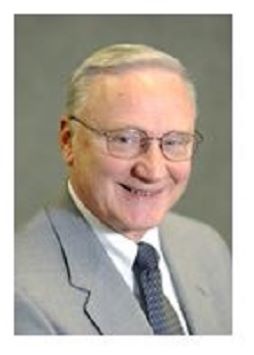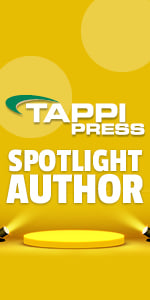 Dr. Michael J. Kocurek
Dr. Michael J. Kocurek

Dr. Michael J. Kocurek, Professor Emeritus of Paper Science & Engineering at North Carolina State University, is one of the world’s most recognized educators in the pulp and paper industry. Dr. Kocurek received his B.S., M.S., and PhD degrees in Paper Science & Engineering from the SUNY College of Environmental Science & Forestry, and Syracuse University. He has served as Paper Science Department Head at the University of Wisconsin-Stevens Point, an academic program he founded; and NC State University.
& Engineering at North Carolina State University, is one of the world’s most recognized educators in the pulp and paper industry. Dr. Kocurek received his B.S., M.S., and PhD degrees in Paper Science & Engineering from the SUNY College of Environmental Science & Forestry, and Syracuse University. He has served as Paper Science Department Head at the University of Wisconsin-Stevens Point, an academic program he founded; and NC State University.
He has also served as Executive Director of the Herty Foundation, a P&P Development Center and authority agency of the State of Georgia.
1. When did you first realize you wanted to be an editor, author, and educator?
Like many educators, I was inspired by one of my teachers. Professor Ted Stenuf, our Chemical Engineering professor at the State University of New York (SUNY) College of Forestry & Environmental Science at Syracuse. He was able to take complicated topics and break them down into simple ways of expressing them so that people could understand. I knew then that I wanted to be a university professor of pulp & paper, and was fortunate to work with Dr. Stenuf during my graduate work. He helped me with my thesis, but also helped design a new curriculum model for teaching P&P. He shaped my teaching style.
In 1969, while at Syracuse, I was approached by a new faculty member, a former executive at Nekoosa Paper in Wisconsin, to see if I was interested in developing a new Paper Science program at the University of Wisconsin-Stevens Point. Easy decision, and over the course of my 16-year tenure, I developed the new program, hired the faculty, and created a Foundation to support scholarships - all of which were incredibly satisfying. During my tenure at University of Wisconsin, I started teaching customized training programs and courses in mills. These courses continue to this day, having taught over 6,000 industry professionals and operators in 200+ sessions at over 150 pulp mills and paper mills.
I joined TAPPI in 1967, and was part of the Education Committee in 1974 when we decided to start holding short courses. One of those courses was Introduction to Pulp and Paper Technology. I am proud to have been the course’s instructor for 46 years.
The first foray into being an author was back when I was teaching in Wisconsin. In the early 1980s, the university had a communications department, which had a television-recording studio. We created a 21-module P&P course on VHS tapes; they were distributed around the world. This was a good format for me- to author P&P technical content electronically.
The next authoring adventure started when I retired from NC State. TAPPI and Alabama Southern were working together on a grant from the National Science Foundation to create new comprehensive eLearning courses, for the newly formed National Network for Pulp & Paper Technology Training (NPT2). Its goal remains to create a more technologically advanced workforce. The nice thing about writing electronic courses is you can do that anywhere. As a recent retiree, I was able to do a lot of the writing from the decks of cruise ships. Ultimately, nine courses and two sets of laboratories were created, working with great colleagues like Chuck Klass, Marty Hubbe, Richard Venditti, and Margaret Joyce.
When it comes to books, in the late 1970s and early 1980s, I was serving on TAPPI’s Joint Textbook Committee with our Canadian CPPA colleagues, and was asked by Gunnar Nicholson Gold Medal recipient Alfred Nissan to take the lead as the Series Editor to revise the Pulp and Paper Manufacturing series. I told Alfred that I very busy teaching and I did not think I have the time for something like this. His response was “Mike, I only ask people who are very busy and have no time to take on projects like this.” What can you say in response when asked by a legend in our industry? It took seven or eight years to finish the ten volumes. It was a fascinating process, again working with so many interesting people-- all top of them line experts in their areas (I see that Ben Thorp is still imparting knowledge to Young Professionals).
Most recently, Gary Smook asked if I could edit the fourth edition of his Handbook for Pulp and Paper Technologists. I was fortunate to be teaching in 1982 when Gary received the initial grant to write his first edition of this book, which became and remains a bible to the industry.
Again, it was an honor to work with so many great contributors and companies for this newest edition, which was published by TAPPI in 2016.
2. What is your work schedule like when you’re editing?
When authoring or editing, like teaching, it becomes a passion. We all write until there is not any more brainpower left for the day.
3. What advice do you have for anyone considering editing a TAPPI publication?
Never pass up the honor of being asked to author or edit. There are many challenges, benefits, and much pleasure in the process. You can simply look at any book and see the range of people that an editor/author comes in contact with—it’s amazing.
There is joy and a deep satisfaction in creating something that advances knowledge to so many others, and to the entire industry.
Finally, when asked to serve as an editor or author, remember the words of Borg 7 of 9 from Star Trek Voyager: “Resistance is futile. YOU MUST COMPLY”.
Inside this Section
- Recommended Reads
- Ordering & Shipping
- Speaker & Author Resources
- TAPPI Conference Papers
- TAPPI Press ebooks
- NPT2
- Bookstore
- Withdrawn TIPs
- Administratively Withdrawn Standards
- Technically Withdrawn Standards
- Test Equipment Suppliers
- TIPs Subject Index
- Standards Subject Index
- Standards Numeric Index
- TAPPI Journal Digital Issue Library
